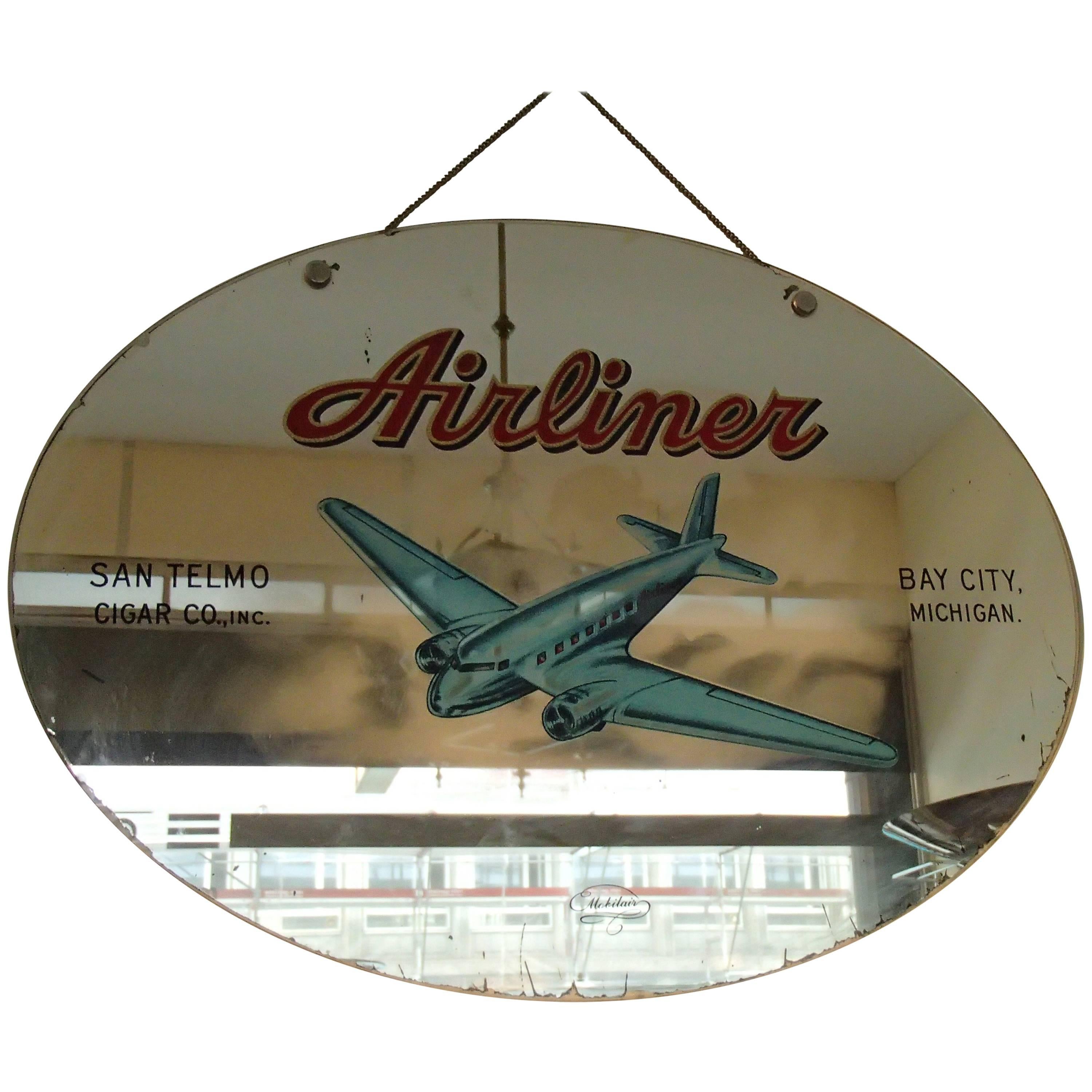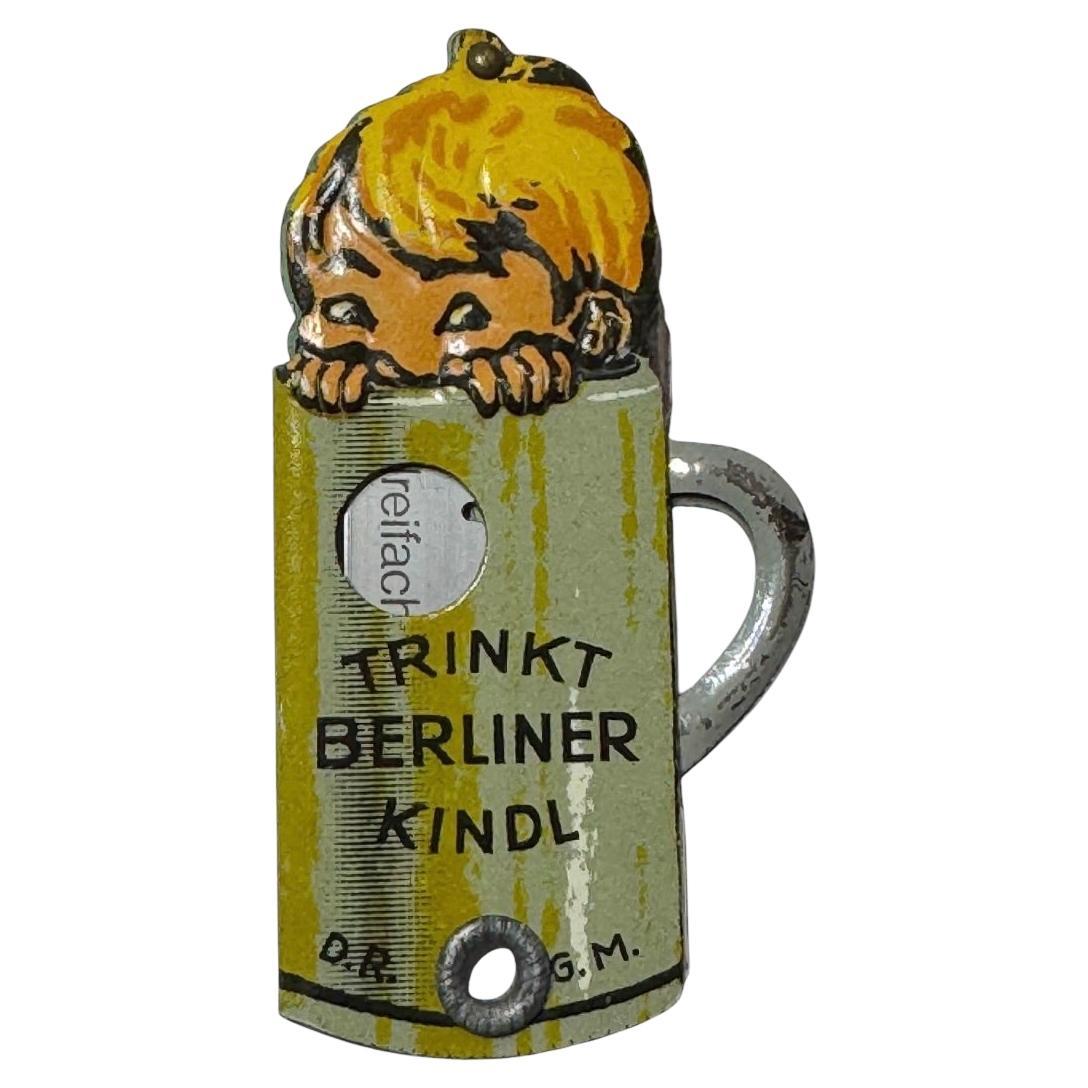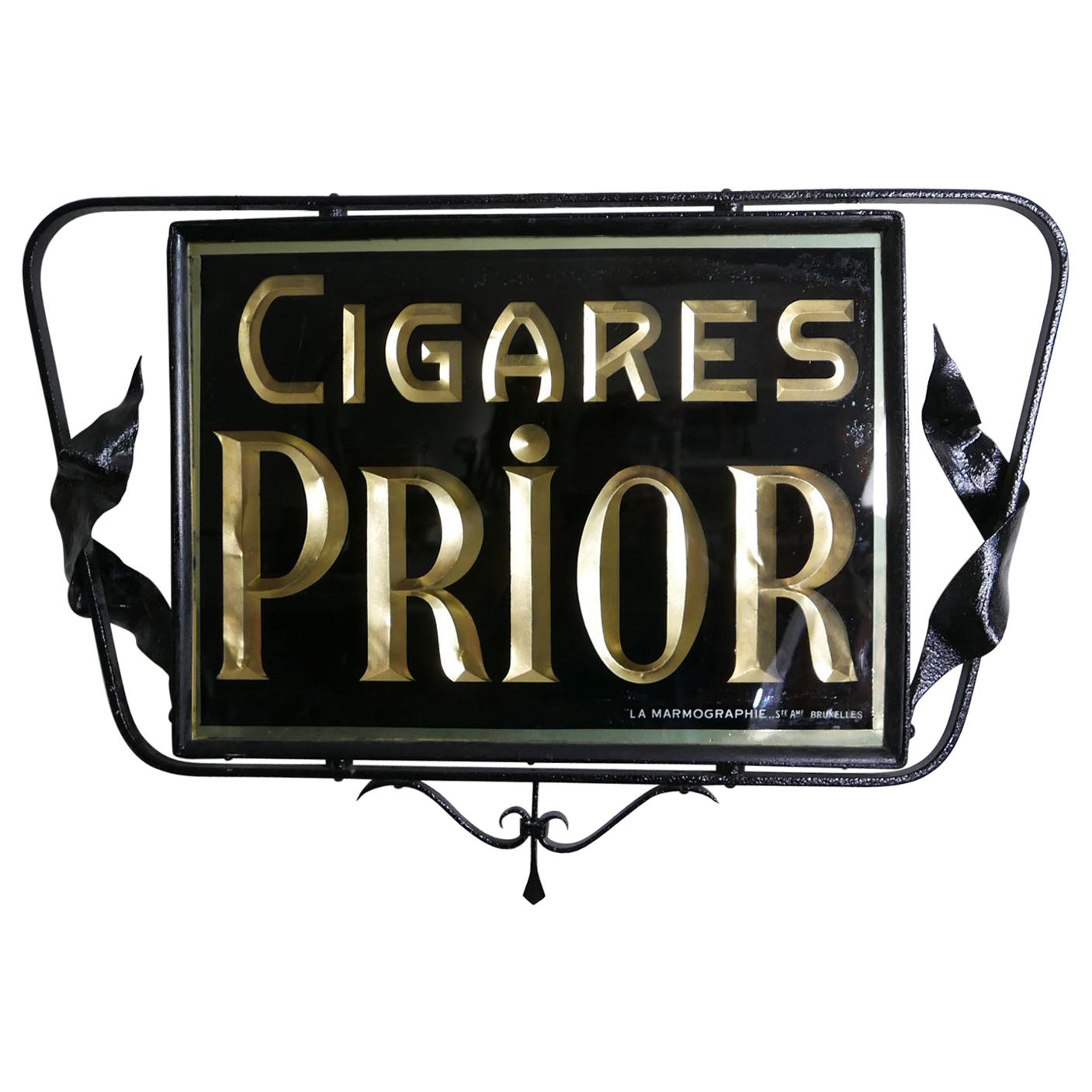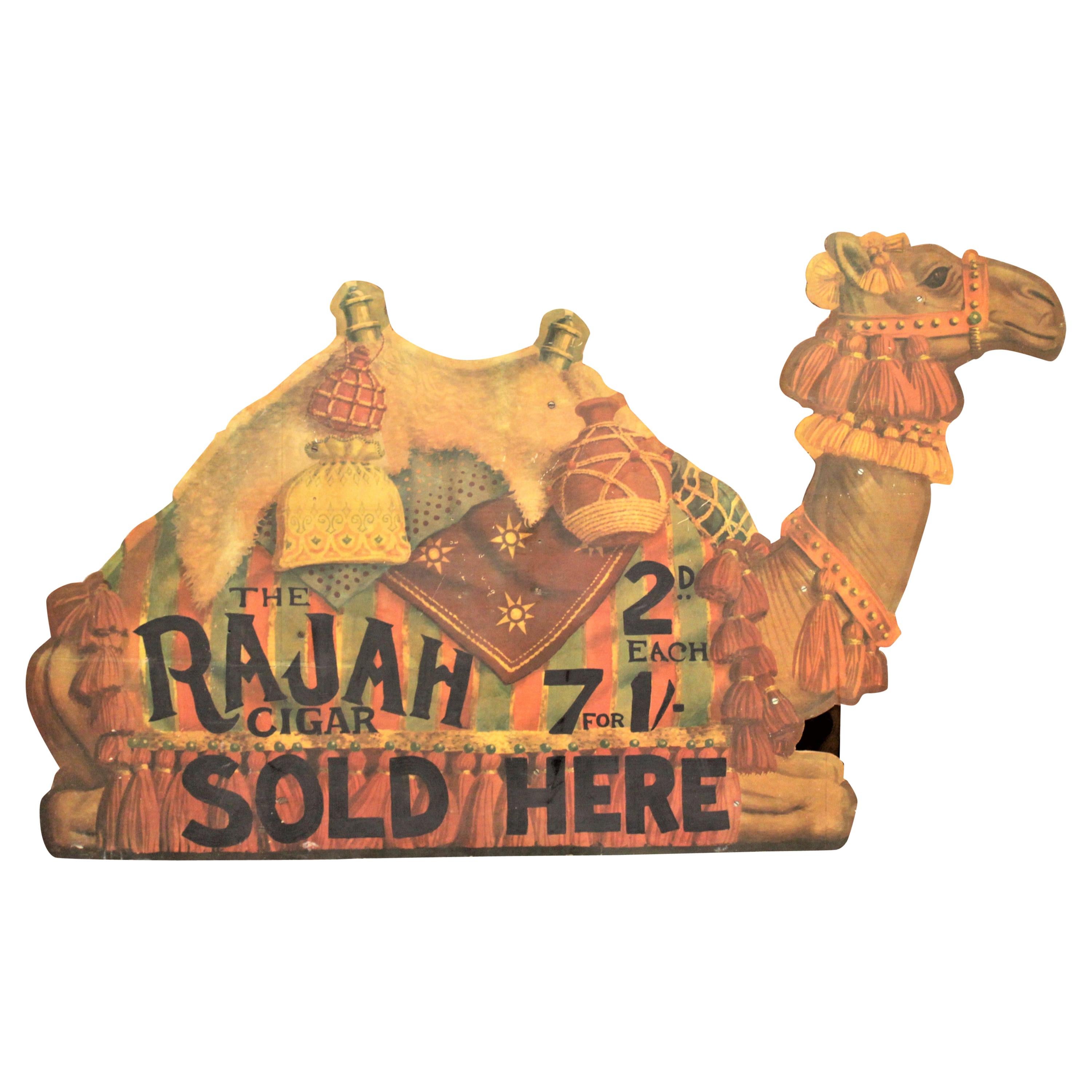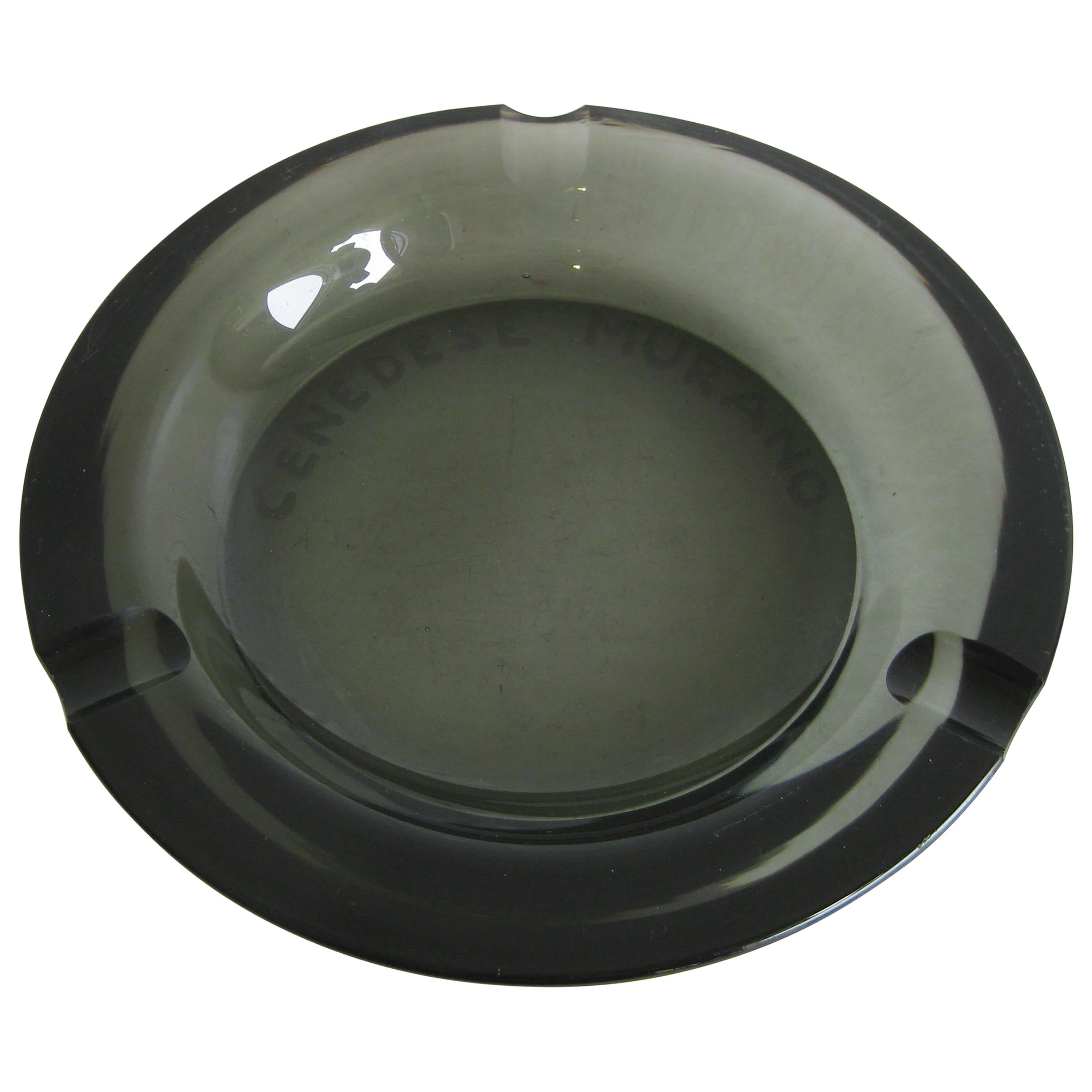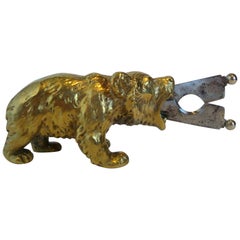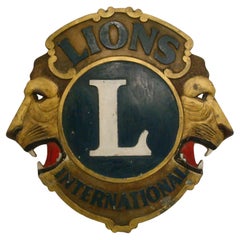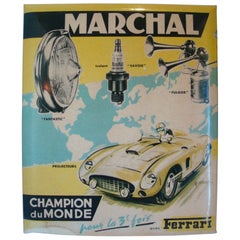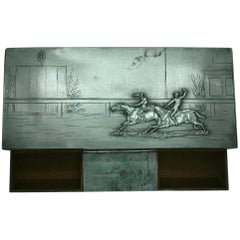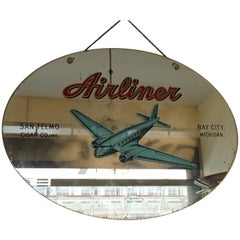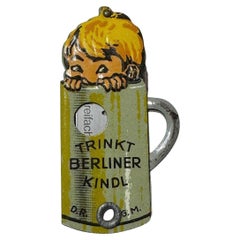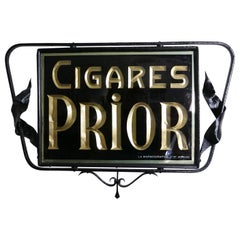Objekte ähnlich wie Giant Advertising Cigar Statue / Bar Lounge / Cigars
Möchten Sie mehr Bilder oder Videos?
Zusätzliche Bilder oder Videos von dem*der Anbieter*in anfordern
1 von 20
Giant Advertising Cigar Statue / Bar Lounge / Cigars
Angaben zum Objekt
Giant Advertising Cigar Statue / Bar Lounge / Cigars.
Large Cigar Tobacco Trade Sign Cigars, made of wood with an iron and brass support. Fantastic Folk Art Sculpture.
This is a Giant / Big Cigar Advertising Sign Counters top sign.
This sign would date to late 30’s.
We have specialized in the sale of Art Deco and Art Nouveau and Vintage styles since 1995. If you have any questions we are at your disposal. Pushing the button that reads 'View All From Seller'. And you can see more objects to the style for sale. Why are there so many antiques in Argentina?
In the 1880 – 1940 there was a grate wave of immigration encouraged by the periods of war that were taking place. 1st World War took place between 1914 and 1918 2nd World War took place between 1939 and 1945 The immigrants options were New York or Buenos Aires. Tickets were cheap and in Buenos Aires they were welcomed with open arms, as it was a country where everything was still to be done. Argentina was the country of new opportunities, labour was needed and religious freedom was assured, in many cases the of the family travel first until they were settled and then the rest of the family members join them. In the immigrant museum “Ellis Island Immigrant Building” in New York you can se the promotional posters of the boats that would take them to a new life. Between the years 1895 and 1896, Argentina had the highest DGP (gross domestic product) per capita in the world according to the Maddison Historical Statistics index, this situation arose due to the large amount of food being exported to European countries, which were at war. The Argentinean ships left the port of Buenos Aires with food, but they returned with furniture, clothes and construction elements, (it´s common to see this the old buildings of the historic neighbourhood of San Telmo, the beams with the inscription “Made in England)”, as well as many markets that were built in Buenos Aires, such us the San Telmo Market, whose structure was brought by ship and afterwards assembled in 900 Defensa Street. With the great influence of European immigrants living in the country, the children of the upper classes travelled to study in France, resulting in the inauguration of “La Maison Argentinienne”, on 27th of June 1928, in the international city of Paris, which hosted many Argentinians that were studying in Frace. It´s the fourth house to be built after France, Canada and Belgium, being the first Spanish-speaking one. Still in place today (17 Bd Jourdan, 75014, Paris, France). Many of the children of these wealthy families who attended international art exhibitions, museums and art courses abroad, took a keen interest in the European style. This is why Buenos Aires was at the time referred as “The Paris of South America”. Between the years 1890 and 1920 more than a hundred Palaces were built on Alvear Avenue the most exclusive avenue in Buenos Aires. Today some of these palaces have been transformed into museums, hotels and embassies. In the year 1936, the Kavanagh building was inaugurated, it was the tallest reinforced concrete building in South America. During 1994 the American Society of Civil Engineers distinguished it as an “international engineering milestone”, and it´s now considered a World Heritage of Modern Architecture. At the time was common to hire foreign architects such as Le Corbusier, who visited Buenos Aires/Argentina in 1929 and in 1948 he drew up the blueprints for a house built in La Plata City (which was declared a World Heritage Site). In 1947, the Hungarian architect Marcelo Breuer designed “Parador Ariston” in the seaside city of Mar del Plata. After an Argentinean student at Harvard University convinced him to come to Argentina. He worked on an urban development project in the Casa Amarilla, area of La Boca. The Ukrainian architect, Vladimiro Acosta, arrives in Argentina in 1928 and worked as an architect until que moved to Brazil. Antonio Bonet, a Spanish architect who worked with Le Corbusier in Paris, arrives in Argentina in 1937, where he carried out several architectural works and in 1938 designs the well-known BFK chair. Andres Kálnay, of Hungarian origin, made around 120 architectural masterpieces, among which the former Munich brewery stands out, he even made the furniture’s design. The German architect, Walter Gropius, director of the Bauhaus, lived in Argentina, where he wrote articles for “Sur” magazine and founded in Buenos Aires, an architectural firm with Franz Möller, who was also an architect, where he built two houses. At the same time several famous designers decided to immigrate to Argentina, among them we can find the well-known French designer, Jean-Michel Frank, who arrived in the country in 1940 and also worked for the Rockefeller family. Special pieces were made, which were sold exclusively in the country, such as the well-known German company “WMF”, who sold their products by catalogue, which were chosen by the ladies of high society in the list of wedding gifts, as well as the pieces designed by Christofle. The Swiss sculptor Alberto Giacometti, made special pieces for Argentinean mansions. In 1904 the first Jansen branch outside Paris was established in Buenos Aires, as the Argentinean clientele demanded a large amount of furniture, from the end of the 19th century to the mid-20th century. In 1970, the brand Rigolleau Argentina made pieces authorised by Lalique. The brands Maple and Thompson also set up shop in the country. The French plastic artist, Marcel Duchamp moved to Argentina in 1918-1919. Glass signed Gallé, Charder, Leverre, Schneider, Muller and other French firms. They were bought in flower shops and were given to ladies with beautiful floral arrangements. Some furniture manufacturers travelled to international fairs and bough the patterns to produce the furniture in Argentina, such as the furniture firm Englander and Bonta, who bought the patterns in Italy. It is worth mentioning that in Argentina we have the largest community of Italians outside of Italy, as it is estimated that 70 percent of the inhabitants have at least one Italian descendant, followed by Spanish immigrants. The most Important furniture stores in Argentina: Comte is founded in 1934 (under the direct management of Jean Michel Frank in 1940). Nordiska (Swedish company established in 1934). Churba in 1960, a company that brought foreign designers to present their furniture in the country: Denmark: (Arne Jacobsen, Finn Juhl, Bender Madsen, Ejner Larsen, Poul Kjaerholm, Hans Wegner) Sweden: (Hans Agne Jakobsson, Gustavsberg) United States: (Herman Miller) Finland: (Lisa Johansson, Folke Arstrom, Tapio Wirkkala, Alvar Aalto, Timo Sarpaneva) Swedish Factory: (Orrefors) Italy: (Littala, Vico Magistretti, Emma Gismondi, Gae Aulenti, Angelo Mangiarotti, Elio Martinelli, Gianna Celada, Angelo Mangiarotti, Mario Bellini, Carlo Scarpa) Finland: (Olivia Toikka) Plata Lappas (Lappas Silver): a goldsmith shop founded in 1887 in Argentina by Alcibiades Lappas of Greek origin. In 2019, in Argentina took place “the Art Deco world congress” . Argentina currently has more than 100 Art Deco buildings and another 90 Art Nouveau buildings throughout the city of Buenos Aires. Argentina is a country that has not been involved in many wars, which is why it has been a refuge for works of art and antiques from different periods of time, unlike European countries. That is way many collectors, museums and antique dealers from all over the world visit it, you should not miss the opportunity to visit this great country.
- Maße:Höhe: 27 cm (10,63 in)Breite: 70 cm (27,56 in)Tiefe: 16 cm (6,3 in)
- Stil:Moderne der Mitte des Jahrhunderts (Aus dem Zeitalter)
- Materialien und Methoden:
- Herkunftsort:
- Zeitalter:
- Herstellungsjahr:1930´s
- Zustand:Abnutzung dem Alter und der Nutzung entsprechend.
- Anbieterstandort:Buenos Aires, AR
- Referenznummer:1stDibs: LU2027345313562
Anbieterinformationen
4,9
Geprüfte*r Anbieter*in
Jede*r Anbieter*in erfüllt strenge Standards bezüglich Echtheit und Zuverlässigkeit
Gründungsjahr 2002
1stDibs-Anbieter*in seit 2016
318 Verkäufe auf 1stDibs
Typische Antwortzeit: 1 Stunde
- VersandAngebot wird abgerufen …Versand von: Buenos Aires, Argentinien
- Rückgabebedingungen
Einige Inhalte dieser Seite wurden automatisch übersetzt. Daher kann 1stDibs nicht die Richtigkeit der Übersetzungen garantieren. Englisch ist die Standardsprache dieser Website.
Authentizitätsgarantie
Im unwahrscheinlichen Fall eines Problems mit der Echtheit eines Objekts kontaktieren Sie uns bitte innerhalb von 1 Jahr für eine volle Rückerstattung. DetailsGeld-Zurück-Garantie
Wenn Ihr Objekt nicht der Beschreibung entspricht, beim Transport beschädigt wurde oder nicht ankommt, kontaktieren Sie uns bitte innerhalb von 7 Tagen für eine vollständige Rückerstattung. DetailsStornierung innerhalb von 24 Stunden
Sie können Ihren Kauf jederzeit innerhalb von 24 Stunden stornieren, ohne jegliche Gründe dafür angeben zu müssen.Geprüfte Anbieter*innen
Unsere Anbieter*innen unterliegen strengen Dienstleistungs- und Qualitätsstandards, wodurch wir die Seriosität unserer Angebote gewährleisten können.Preisgarantie
Wenn Sie feststellen, dass ein*e Anbieter*in dasselbe Objekt anderswo zu einem niedrigeren Preis anbietet, werden wir den Preis entsprechend anpassen.Zuverlässige weltweite Lieferung
Unsere erstklassigen Versandunternehmen bieten spezielle Versandoptionen weltweit, einschließlich individueller Lieferung.Mehr von diesem*dieser Anbieter*in
Alle anzeigenÖsterreichischer Bronzebär Zigarrenschneider, ca. 1900's
Ein massiver Bronze Bär Skulptur Desktop Zigarrenschneider in Österreich hergestellt. Die Scherenklingen aus Stahl sind aus dem Maul des brüllenden Bären herausnehmbar. Ausgezeichnet...
Kategorie
Frühes 20. Jahrhundert, Österreichisch, Art déco, Tabakzubehör
Materialien
Bronze
Vintage Lions Club International Metallplakette / Gemaltes Werbeschild, 1940er Jahre
Vintage Antique Lion's Club International Plaque / Schild mit größtenteils originaler Handbemalung. Es hat einige Alter Verschleiß, aber insgesamt sehr guten Bedingungen.
Metallplak...
Kategorie
Mitte des 20. Jahrhunderts, amerikanisch, Moderne der Mitte des Jahrhund...
Materialien
Metall
999 $
Kostenloser Versand
Marchal Ferrari 375 Plus Accessory Counter Werbeschild, ca. 1950er Jahre
Marchal Ferrari Zubehörtheke Werbeschild, ca. 1950er Jahre, Farbe Litho Zelluloid über Karte zurück.
Das Zeichen wurde hergestellt, als Marchal (elektrische Autoteile einschließlich...
Kategorie
Vintage, 1950er, Französisch, Moderne der Mitte des Jahrhunderts, Poster
Materialien
Sonstiges
Schreibtisch Pferderennen Zigarrenraucherbox, um 1900
Zigarrenkiste für Pferde mit Platz für Streichhölzer. Perfekt für den Schreibtisch.
Graviert mit Rennpferden.
Kategorie
Frühes 20. Jahrhundert, amerikanisch, Art nouveau, Tabakzubehör
Materialien
Messing
Cigars Store / Trade Folk Art Wooden Carved Sign. c 1900
Amerikanisches Folk-Art-Holzschild "CIGARS" aus den 1920er Jahren.
Großartiges altes Store Trade-Schild. Zigarrenförmig geschnittenes Holz. Beschriftet mit Goldfarbe.
Unter guten Bed...
Kategorie
Frühes 20. Jahrhundert, amerikanisch, Volkskunst, Schilder
Materialien
Holz
Art Deco Shagreen und Silber Zigarettenetui / Kleines Zigarrenetui
Exquisites Zigarrenetui aus Chagrin mit Silberkragen. Erweitert für unterschiedliche Längen von kleinen Zigarren oder Zigaretten.
Hergestellt im K.K. in den 1900-1920er Jahren. Es t...
Kategorie
Frühes 20. Jahrhundert, Britisch, Art déco, Tabakzubehör
Materialien
Sterlingsilber
1.200 $ Angebotspreis
20 % Rabatt
Das könnte Ihnen auch gefallen
Werbespiegel „Airliner“ aus der Mitte des Jahrhunderts San Telmo Cigar Co Bay City Michigan
Werbespiegel aus der Mitte des Jahrhunderts "Airliner" San Telmo Cigar Co. Bay City Michigan an einer Kette
Einige Abnutzungserscheinungen an den Rändern.
Kategorie
Vintage, 1950er, amerikanisch, Moderne der Mitte des Jahrhunderts, Luftf...
Materialien
Spiegel
Berliner Kindl Bierwerbung Taschen-Zigarrenschneider Antik, deutsch, 1930er Jahre
Ein Berliner Kindl (Kindl) Bier Werbung Zigarrenschneider. Einige Verschleiß mit einer schönen Patina, aber das ist das Alter. Hergestellt aus lithographiertem Blech und einer Rasier...
Kategorie
Vintage, 1930er, Deutsch, Tabakzubehör
Materialien
Metall
Doppelseitige Reverse gemalt Zigarre hängende Werbung Zeichen
Doppelseitiges Zigarrenschild aus Belgien, Anfang 20.
In der Originalverpackung.
Hergestellt von "La marmographie St Amf, Bruxelles", die um 1910 gegründet wurde.
Ein Werbes...
Kategorie
Vintage, 1920er, Belgisch, Tabakzubehör
Materialien
Metall
Vintage Reverse gemalt Glas LaPrimadora Havanna Zigarre Zeichen, Werbung
Vintage Reverse gemalt Glas LaPrimadora Havanna Zigarre Zeichen
Zum Verkauf angeboten wird eine sehr große überdimensionale Vintage Reverse gemalt Glas Zigarre Zeichen, dass ein Ha...
Kategorie
Ende des 20. Jahrhunderts, Tabakzubehör
Materialien
Glaskunst, Vergoldetes Holz
Großes Display-Schild aus der Mitte des Jahrhunderts Gran Habano Rajah für Zigarrenwerbung
Dieses sehr große und farbenfrohe Ladenschild in Plakatgröße wurde vermutlich in den 1960er Jahren in den Vereinigten Staaten für die Gran Habano Cigar Company aus Honduras hergestel...
Kategorie
Mitte des 20. Jahrhunderts, amerikanisch, Anglo Raj, Historische Sammler...
Materialien
Papier
Italienischer modernistischer Zigarren-Aschenbecher aus Cenedese Barbini Murano-Kunstglas
Von Cenedese
Einzigartiger Aschenbecher aus Muranoglas von Cenedese, ca. 1950er Jahre. Es scheint, dass es sich um einen Werbespot handeln könnte. Auf der Unterseite signiert. Die Farbe ist ein r...
Kategorie
Mitte des 20. Jahrhunderts, Italienisch, Tabakzubehör
Materialien
Glaskunst
